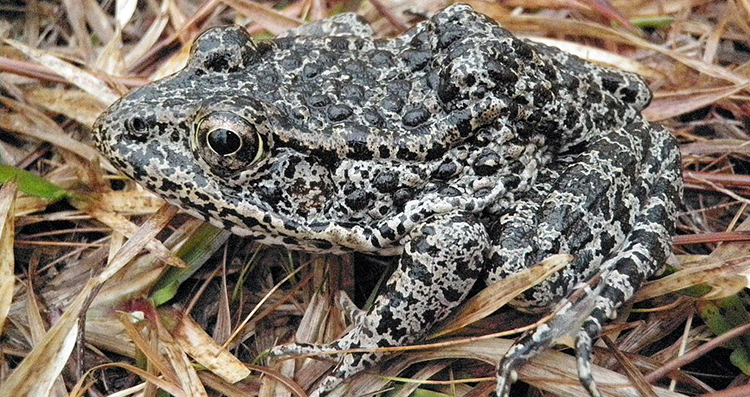Supreme Court returns conservation battle over dusky gopher frog to 5th Circuit appeals court

Dusky gopher frog. Photo by U.S. Department of Agriculture, via Wikimedia Commons.
A challenge to the government’s critical habitat designation for the endangered dusky gopher frog is going back to a federal appeals court for another round.
The U.S. Supreme Court ruled 8-0 on Tuesday that the 5th U.S. Circuit Court of Appeals at New Orleans erred in its decision favoring the U.S. Fish and Wildlife Service.
The 5th Circuit had ruled the service could designate private land to be the frog’s “critical habitat” even if the land was not a habitat for the species. The Supreme Court disagreed in an opinion by Chief Justice John G. Roberts Jr.
“According to the ordinary understanding of how adjectives work,” Roberts wrote for the court, “ ‘critical habitat’ must also be ‘habitat.’ ” That meaning is also consistent with the statutory definition, Roberts said.
Justice Brett M. Kavanaugh did not take part in the decision.
The Supreme Court remanded the case for the 5th Circuit to define the word habitat. The court said habitat could, by the statutory definition, include areas where the species doesn’t currently live. But still unresolved is whether land can be a habitat even if it would have to be modified to sustain the species.
The Supreme Court also directed the 5th Circuit on remand to consider whether the government’s cost-benefit analysis of the designation was arbitrary, capricious or an abuse of discretion. The 5th Circuit had wrongly determined the Fish and Wildlife Service’s analysis—which favored the frog—could not be reviewed by the courts, the Supreme Court said.
The dusky gopher frog lives underground in only four U.S. locations, all located in two adjacent counties on the Gulf Coast of Mississippi. Fish and Wildlife had determined that a fifth location in Louisiana needed to be designated a critical habitat because of the danger that local events such as extreme weather could wipe out the entire species.
The Louisiana land is partly owned by a timber company, the Weyerhaeuser Co., which points out that the dusky gopher frog hadn’t lived there since 1965. The frog couldn’t live there now without some modification of the tree canopy, Weyerhaeuser says.
A report by the Fish and Wildlife Service said the critical habitat designation could impede development of the Louisiana site, costing $20.4 million to $33.9 million in lost development value. The service said those potential costs were not disproportionate to the conservation benefits of a critical habitat designation.



